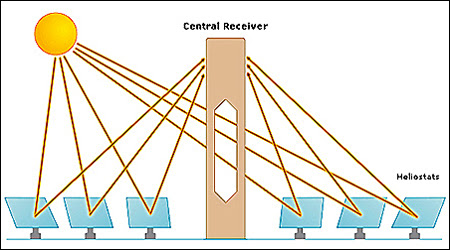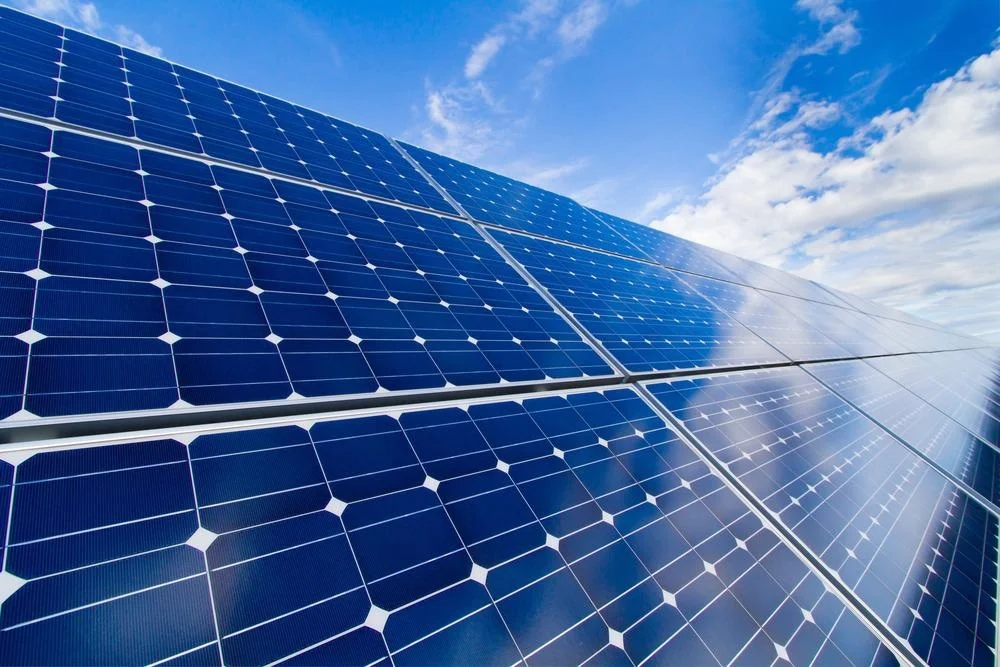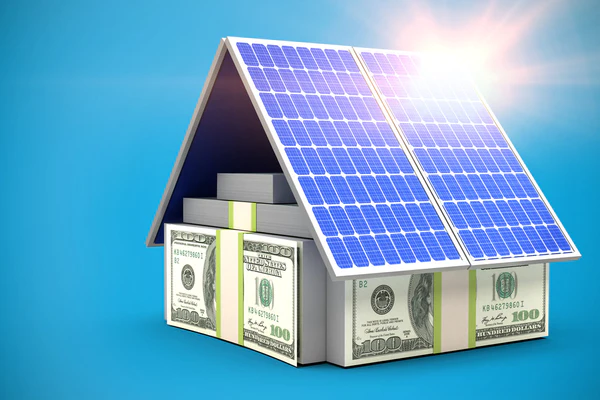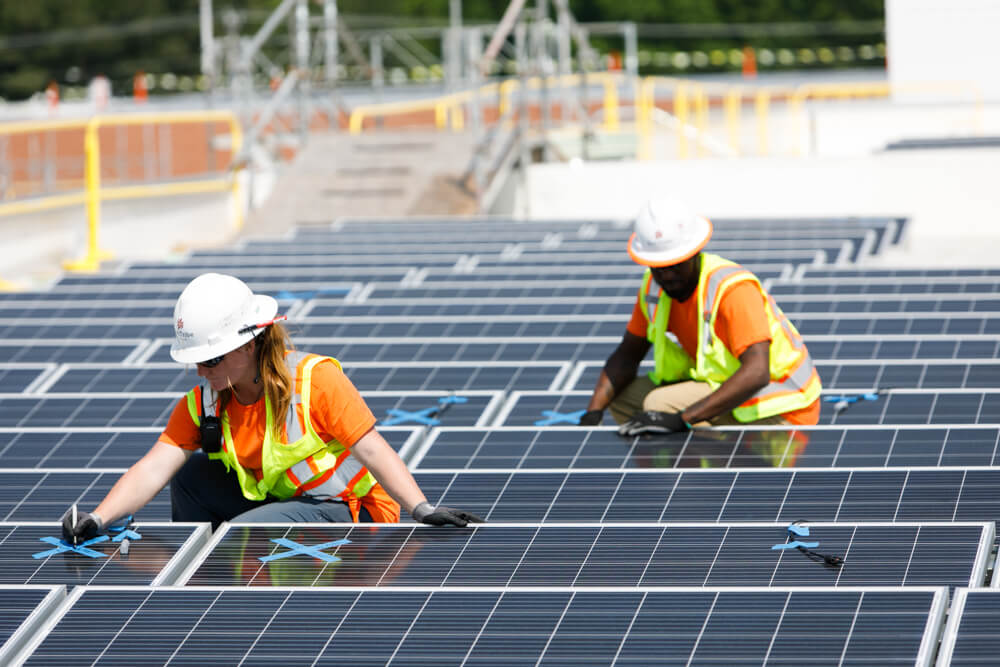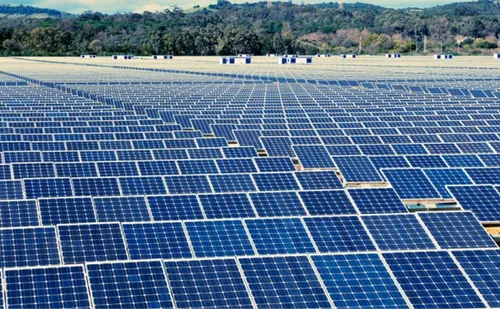Introduction The future of solar energy subsidies holds immense significance in our journey towards a sustainable future. As the world faces the challenges of climate change and the depletion of fossil fuels, the promotion and support of renewable energy sources like solar power are essential. This article aims to provide an overview of the topic, discuss its relevance and importance, and explore the reasons why it is deemed interesting for various stakeholders. Historical Background To understand the future of solar energy subsidies, it is crucial to delve into its historical background. Solar energy subsidies have been in existence for several…
Author: jenks2026
Introduction Solar energy regulations and permits are crucial for the development and implementation of solar energy projects. As the world moves towards cleaner and more sustainable energy sources, understanding the regulatory frameworks governing the solar industry becomes essential. This article provides a detailed overview of solar energy regulations and permits, emphasizing their relevance and importance in facilitating the growth of solar energy. By exploring key concepts, discussing main discussion points, and examining case studies and current trends, readers will gain a deeper understanding of the complexities and opportunities within this field. Historical Background Solar energy regulations and permits have evolved…
Introduction Solar panels have emerged as a popular and viable alternative to traditional sources of energy. As the world grapples with the need to transition to clean and sustainable energy sources, it is crucial to understand how solar panels work and their significance in this shift. By harnessing the power of the sun, solar panels offer a renewable and environmentally-friendly solution to meet our energy needs. Historical Background Solar energy has been utilized for centuries, with ancient civilizations using magnifying glasses to concentrate sunlight and create fire. However, it was not until the mid-20th century that the development of solar…
Introduction Solar technology has come a long way since its early beginnings. This article explores the history and evolution of solar technology, highlighting its relevance and importance in today’s world. Additionally, it discusses the potential impact of solar technology on energy production and sustainability. Historical Background Solar energy has been utilized by ancient civilizations for centuries. Various civilizations harnessed the power of the sun for heating, cooking, and lighting. In more recent history, early solar technologies and discoveries paved the way for further advancements. Key Concepts and Definitions Understanding key terms and concepts is essential when exploring the history and…
Introduction: Solar panels are a popular choice for renewable energy generation. It is important to understand the different types of solar panels in order to make an informed decision for your energy needs. This article explores the key differences between monocrystalline, polycrystalline, and thin-film solar panels, highlighting their potential benefits and drawbacks. Historical Background: Solar panels have evolved significantly since their inception. The history of solar panels dates back to the mid-19th century when the photovoltaic effect was discovered. However, it wasn’t until the 1950s that the first practical solar panel was developed. Over time, advancements in the field have…
Introduction Solar cell efficiency is a critical factor in harnessing the power of the sun to generate electricity. As renewable energy sources gain popularity, understanding how solar cell efficiency is measured becomes crucial for advancements in solar energy. This article explores the historical background, key concepts, main discussion points, case studies, current trends or developments, challenges or controversies, future outlook, and the importance of improving solar cell efficiency. Historical Background Solar cell efficiency has come a long way since its inception. The first solar cell, built in 1954, had an efficiency of only around 6%. Since then, significant advancements…
Introduction Solar energy systems have gained significant attention in recent years as a sustainable and renewable source of power. One crucial component of these systems is the inverter, which plays a vital role in converting the direct current (DC) generated by solar panels into alternating current (AC) that can be used to power homes and businesses. This article explores the function and significance of inverters in solar energy systems, highlighting their importance in maximizing energy production and efficiency. Historical Background The development and evolution of inverters in solar energy systems have been driven by the need for efficient and reliable…
Introduction Bifacial solar panels are an innovative and advanced technology in the field of renewable energy. These panels have the unique ability to capture sunlight from both sides, maximizing energy generation and efficiency. In this article, we will explore the historical background, key concepts, advantages, potential applications, and future outlook of bifacial solar panels. Historical Background Since their invention in the 1950s, solar panels have undergone significant advancements. Early versions of solar panels were inefficient and expensive, limiting their widespread adoption. However, with improvements in technology and manufacturing processes, solar panels have become increasingly popular as a clean and renewable…
Introduction Concentrated Solar Power (CSP) systems are a type of renewable energy technology that harnesses the power of the sun to generate electricity. These systems use mirrors or lenses to concentrate sunlight onto a small area, which then heats a fluid or produces steam to drive a turbine and generate electricity. CSP systems are becoming increasingly important in the context of renewable energy due to their ability to provide clean, sustainable power. Historical Background The history of CSP systems can be traced back to ancient civilizations, who used magnifying glasses and mirrors to concentrate sunlight for heating and cooking purposes.…
Introduction Nanotechnology in solar cells has emerged as a groundbreaking field with the potential to revolutionize the way we harness solar energy. This article aims to explore the relevance and importance of nanotechnology in solar cells and provide an overview of why it is considered the future of solar energy. Historical Background Solar cells have evolved significantly over the years, from the first-generation silicon-based cells to the more advanced thin-film and multi-junction cells. However, nanotechnology has propelled solar cell technology to new heights. By manipulating materials at the nanoscale, scientists and researchers have enhanced the efficiency and performance of solar…
Introduction Solar tracking systems play a crucial role in maximizing energy production from solar panels. By following the movement of the sun throughout the day, these systems optimize the angle and position of solar panels, resulting in increased energy output. In this article, we will explore the historical background, key concepts, benefits, installation considerations, case studies, current trends, challenges, and future outlook of solar tracking systems. Historical Background Solar tracking systems have been in use for several decades, with the earliest known installations dating back to the 1970s. These early systems were primarily employed in large-scale solar power plants and…
Introduction The renewable energy sector has witnessed a remarkable increase in the installation of residential solar panels. Homeowners are now more aware of the economic advantages of utilizing solar energy to generate electricity. This article delves into the importance of residential solar panels and explores the various economic benefits they offer. Historical Background Solar panels have come a long way since their inception. The history of solar panels dates back to the mid-19th century when scientists first discovered the photovoltaic effect. However, practical solar cell development only began in the 1950s. Technological advancements and manufacturing processes have made solar panels…
Introduction: Solar energy has emerged as a powerful force in the global energy sector, offering sustainable and renewable power while creating job opportunities. This article explores the historical background, key concepts, and main discussion points surrounding solar energy job creation. By analyzing case studies, current trends, challenges, and the future outlook, we uncover the significance of solar energy job creation for economic, environmental, and social development. Historical Background: Solar energy usage has developed significantly, laying the foundation for today’s thriving industry. From the invention of the photovoltaic cell in the 19th century to the establishment of the first solar power…
Introduction Solar energy and fossil fuels have played significant roles in shaping modern society. This article aims to explore the differences between these two energy sources, discussing their respective advantages and disadvantages. Understanding this comparison is crucial as we search for sustainable and efficient energy solutions. Historical Background Evolution of solar energy utilization Solar energy utilization dates back thousands of years. Ancient civilizations harnessed the power of the sun for heating and lighting purposes. However, it wasn’t until the 20th century that solar technology began evolving rapidly, leading to the development of photovoltaic cells and solar panels. Development and use…
Introduction Solar power and energy independence have become increasingly important concepts as the world faces the challenges of climate change and dwindling fossil fuel reserves. The need for renewable and sustainable energy sources is paramount. This article delves into the historical background, key concepts, advantages, challenges, case studies, current trends, and future outlook of solar power and energy independence. Historical Background Solar power utilization dates back thousands of years when early civilizations used the sun’s energy for heating and cooking. However, it was in the late 19th century that photovoltaic (PV) technology, which converts sunlight into electricity, was discovered. This…
Introduction The topic of solar energy and grid resilience has gained significant attention in recent years due to the increasing challenges related to climate change and the need for sustainable energy sources. Solar energy has emerged as a viable solution in addressing these challenges. This article aims to explore the historical background, key concepts, main discussion points, case studies, current trends, challenges, controversies, future outlook, and the significance of solar energy and grid resilience. Historical Background Solar energy has a rich history that dates back thousands of years. Ancient civilizations, such as the Greeks and Romans, harnessed the power of…
Introduction Greenhouse gas emissions have a significant impact on climate change, leading to rising global temperatures and environmental instability. In order to mitigate climate change, it is crucial to reduce these emissions. This article provides an overview of the importance of reducing greenhouse gas emissions and explores the use of solar power as an effective solution. Historical Background The early use of solar power for heating and electricity dates back centuries, with civilizations harnessing the energy of the sun for various purposes. However, it is in recent decades that the solar power industry has experienced significant growth, thanks to advancements…
Introduction Solar energy plays a crucial role in mitigating climate change by offering a clean and renewable alternative to traditional energy sources. As the world grapples with the environmental challenges posed by greenhouse gas emissions, solar energy has emerged as a viable solution to reduce carbon footprints and combat climate change. This article explores the historical background, key concepts, main discussion points, case studies, current trends, challenges, future outlook, and the significance of solar energy in mitigating climate change. Historical Background The utilization of solar energy dates back to ancient times, with early civilizations harnessing the power of the sun…
Introduction Solar energy has become an increasingly important topic, particularly in remote and off-grid areas where traditional energy sources are limited. In this article, we will explore the significance of solar energy in these regions and the importance of addressing energy needs in such areas. Historical Background The historical development of solar energy has paved the way for its evolution in remote and off-grid areas. Over the years, advancements in technology and a growing understanding of solar power generation have made it a viable solution for energy access in these regions. Key Concepts and Definitions Solar energy Solar energy refers…
Introduction Solar power has emerged as an essential tool in disaster recovery and emergency relief efforts. Its ability to provide sustainable and reliable energy in areas with disrupted electrical grids has made it a valuable asset in times of crisis. In this comprehensive article, we will explore the historical background, key concepts and definitions, main discussion points, case studies, current trends, challenges, future outlook, and the significance of solar power in disaster recovery and emergency relief. Historical Background Solar power has been utilized in disaster response and relief efforts for several decades. Over time, significant milestones and events have shaped…










